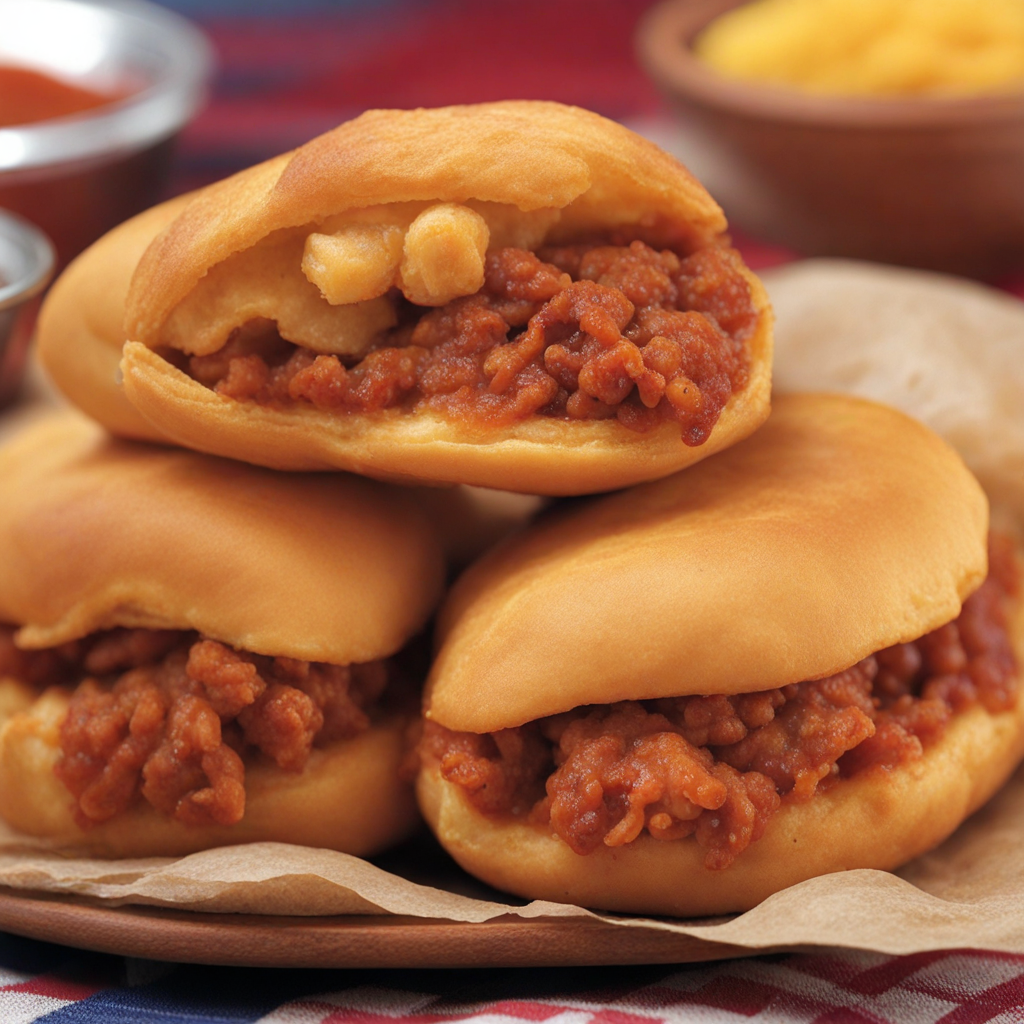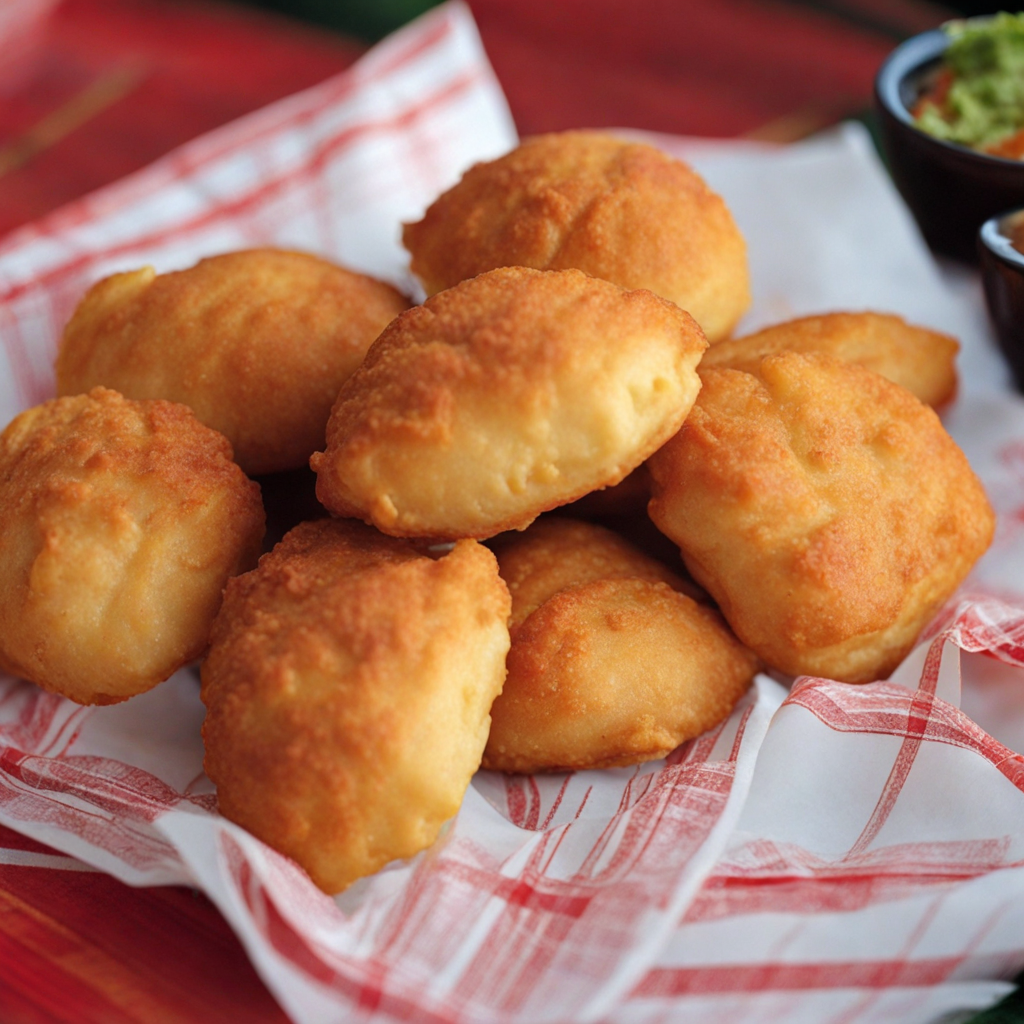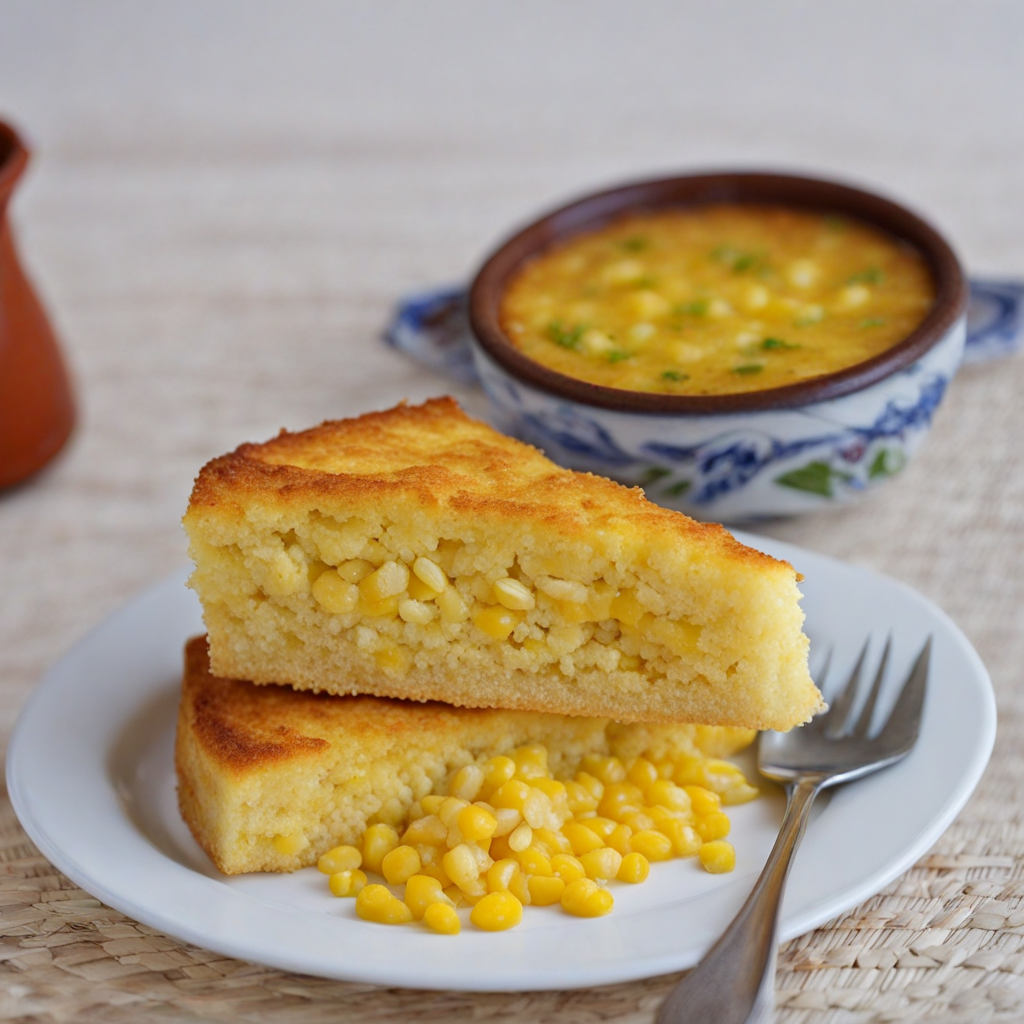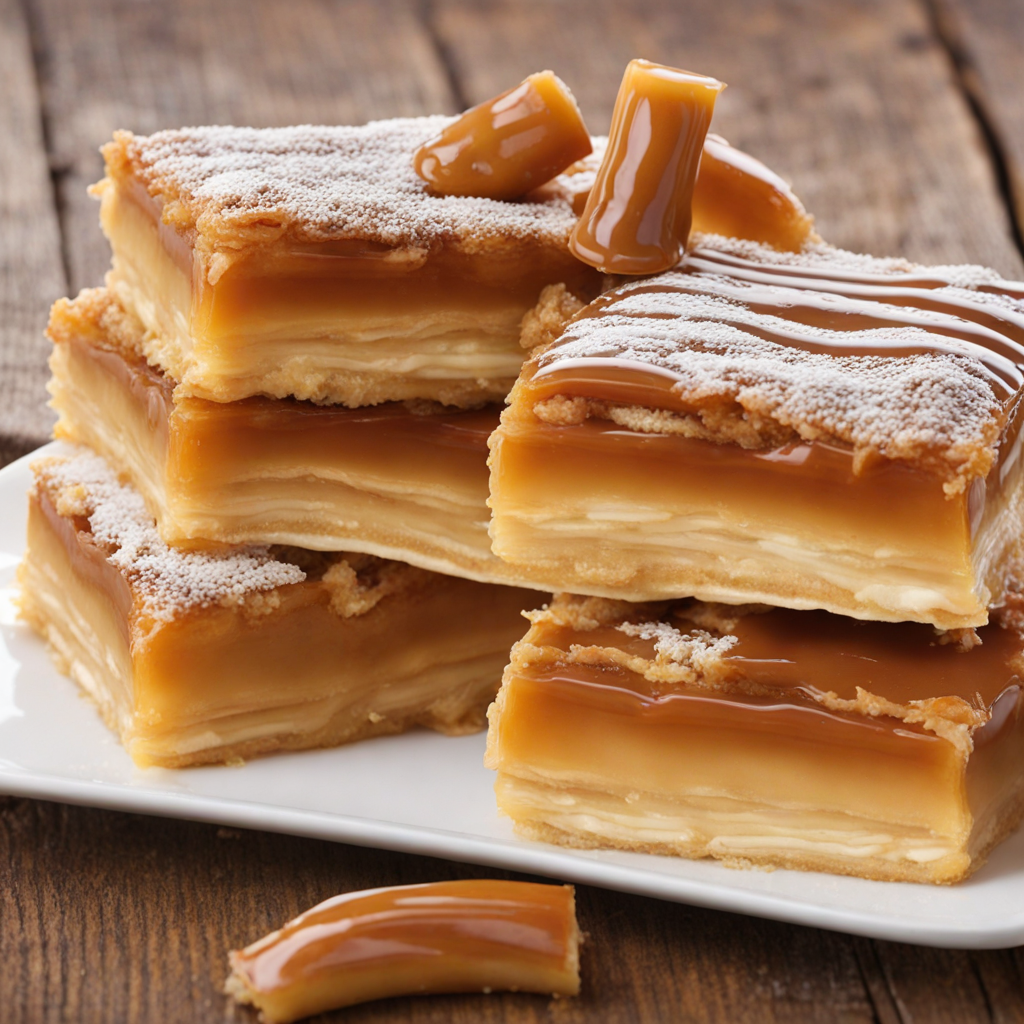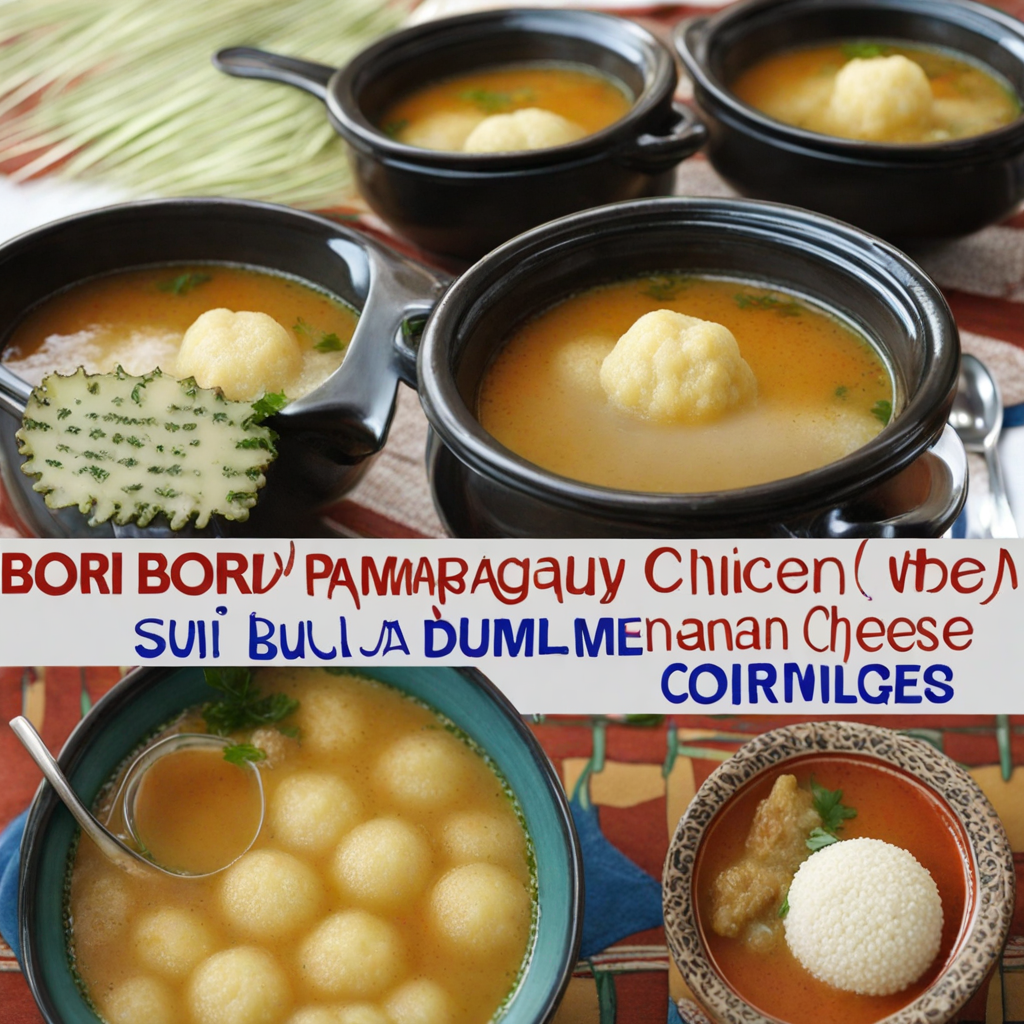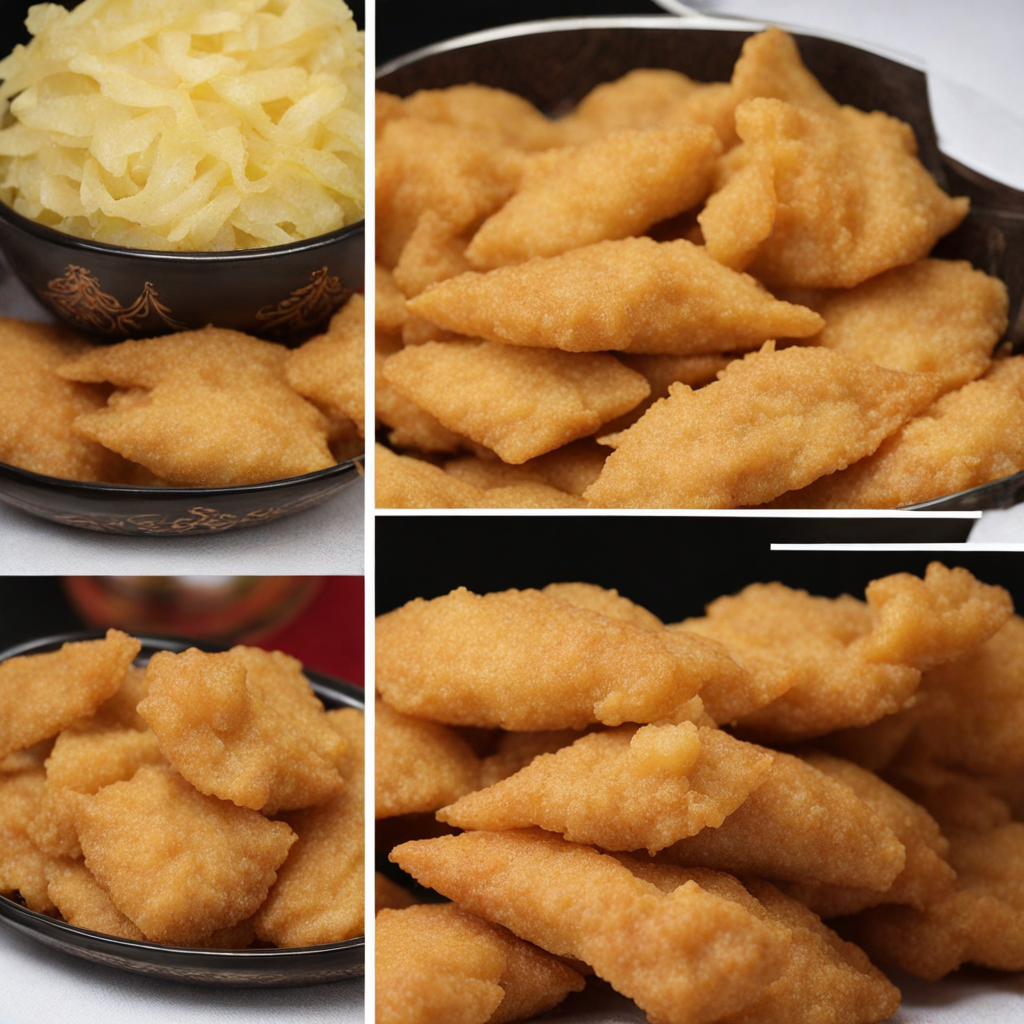Chipa So’o Tavy
Chipa So’o Tavy is a delightful culinary gem from Paraguay, showcasing the country's rich traditions and flavors. This unique dish is a savory cheese bread that combines the characteristic ingredients of cassava flour and cheese, creating a luscious texture that is both chewy and crispy. The recipe often incorporates a blend of fresh cheese, typically Paraguay's famous Paraguayan cheese, which melts beautifully, adding a creamy and salty dimension to each bite. The addition of herbs, such as parsley or cilantro, infuses the bread with a fragrant aroma that complements its cheesy goodness. What sets Chipa So’o Tavy apart is its versatility; it can be enjoyed as a breakfast item, a snack, or even as a side dish for a hearty meal. The dough is typically shaped into small rolls or patties, then baked to perfection, resulting in a golden-brown exterior that encases a soft and flavorful interior. Each mouthful delivers a harmonious balance of textures, with the slight crunch of the crust giving way to the comforting softness within. It’s a dish that embodies the essence of Paraguayan comfort food, perfect for sharing with family and friends. Pairing these delightful cheese breads with a cup of mate or a traditional Paraguayan tereré elevates the experience, offering a taste of the local culture. As you take your first bite of Chipa So’o Tavy, you'll be transported to the heart of Paraguay, where the warmth of the people and the richness of their culinary heritage come together. This dish is not just food; it’s a celebration of community, traditions, and the simple pleasures of life.
How It Became This Dish
Chipa So’o Tavy: A Journey Through Paraguay’s Culinary Heritage #### Origins Chipa So’o Tavy, a delightful and savory snack from Paraguay, has roots deeply embedded in the culinary traditions of the Guarani people, who inhabited the region long before the arrival of European settlers. The Guarani were known for their agricultural practices, cultivating maize, cassava, and various legumes, which formed the basis of their diet. The name “Chipa” itself is derived from the Guarani word “chipá,” which refers to a type of bread made from cassava flour and cheese. The term “So’o,” meaning “meat,” signifies the addition that distinguishes this particular variant from other types of chipa. The creation of Chipa So’o Tavy is thought to have emerged as a fusion of indigenous techniques and ingredients with the influences brought by Spanish colonizers in the 16th century. The introduction of cattle by the Europeans led to the incorporation of beef into the local diet, which allowed for the evolution of traditional recipes. The combination of cassava flour, cheese, and meat reflected the adaptability of the Guarani people, who embraced new ingredients while maintaining their cultural identity. #### Cultural Significance Chipa So’o Tavy is more than just a snack; it is a symbol of Paraguayan culture and identity. The dish is often enjoyed during celebrations, festivals, and family gatherings, serving as a bridge between generations. It embodies the spirit of communal cooking and sharing, common in Paraguayan culture, where food plays a central role in social interactions. In Paraguay, food is not merely sustenance; it carries stories and traditions. Chipa So’o Tavy is often associated with the Christian celebration of Holy Week, where families come together to prepare and enjoy this dish as part of their rituals. It is also a favorite during the colder months, as it offers warmth and comfort—a reflection of the Paraguayan spirit of resilience and togetherness. The dish’s popularity has transcended regional boundaries, becoming a staple in many households throughout Paraguay. Street vendors and local markets often sell Chipa So’o Tavy, making it accessible to both locals and visitors. This widespread availability has contributed to its status as an emblematic Paraguayan food, celebrated for its unique flavor and cultural significance. #### Ingredients and Preparation At its core, Chipa So’o Tavy consists of a few simple ingredients: cassava flour, cheese (traditionally Paraguayan cheese, known as “queso paraguayo”), and minced meat, usually beef or pork. The dough is made by mixing the cassava flour with cheese, eggs, milk, and seasonings, creating a pliable mixture. The meat filling is prepared separately, often seasoned with onions, garlic, and herbs to enhance the flavor. The preparation of Chipa So’o Tavy is a communal activity, often involving family members working together to create the dish. This collaborative process not only strengthens familial bonds but also allows for the transmission of culinary knowledge and traditions from one generation to the next. Once the dough is ready, it is formed into small dumplings or patties, with a generous portion of the meat filling encased within. The patties are then baked until they achieve a golden-brown color, resulting in a crispy exterior and a soft, savory interior. The final product is a delicious snack that embodies the essence of Paraguayan cuisine. #### Evolution Over Time As Paraguay has modernized, so too has the culinary landscape. Chipa So’o Tavy has evolved, with variations appearing across different regions of the country. While the traditional recipe remains cherished, contemporary cooks have introduced innovative twists, experimenting with different types of cheese and meats, as well as incorporating vegetables for added nutrition. In urban areas, you might find gourmet versions of Chipa So’o Tavy served in trendy restaurants, showcasing the versatility of this beloved snack. Chefs often play with flavors, adding spices or even international influences, while still paying homage to the traditional preparation methods. Such adaptations not only keep the dish relevant but also broaden its appeal to a new generation of food enthusiasts. Additionally, the rise of social media has propelled Chipa So’o Tavy into the spotlight, allowing it to gain recognition beyond Paraguay’s borders. Food bloggers and influencers share their experiences with this dish, often highlighting its cultural significance and inviting others to explore Paraguayan cuisine. This global exposure has sparked interest in traditional Paraguayan foods, encouraging a resurgence of interest in local ingredients and cooking techniques. #### Conclusion Chipa So’o Tavy is more than a dish; it represents a rich tapestry of history, culture, and communal spirit in Paraguay. From its origins with the Guarani people to its status as a beloved national snack, it reflects the resilience and adaptability of Paraguayan culinary traditions. As the world becomes increasingly interconnected, the evolution of Chipa So’o Tavy serves as a reminder of the importance of preserving cultural heritage while embracing innovation. As you take a bite of Chipa So’o Tavy, you’re not just tasting a delicious snack; you’re experiencing a piece of Paraguay’s history, a symbol of its cultural identity, and a testament to the enduring power of food to bring people together. Whether enjoyed during a family gathering, a festive celebration, or simply as a comforting treat, Chipa So’o Tavy will always hold a special place in the hearts of Paraguayans and food lovers around the world.
You may like
Discover local flavors from Paraguay


